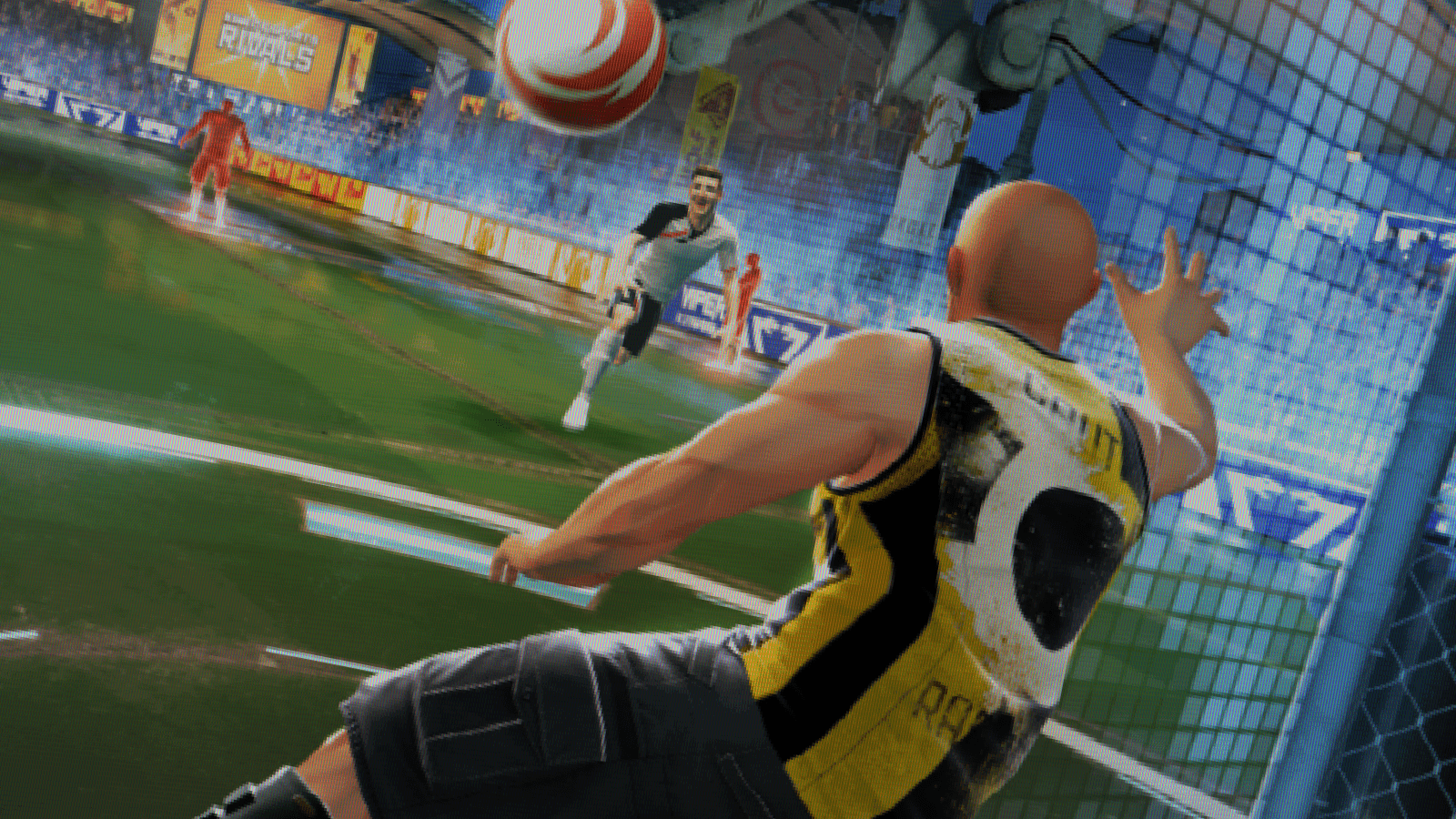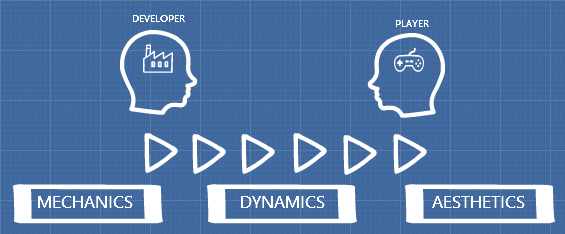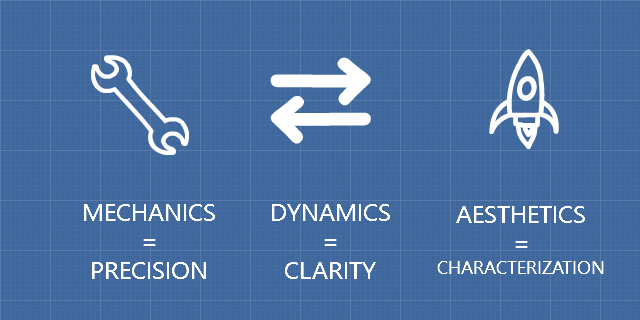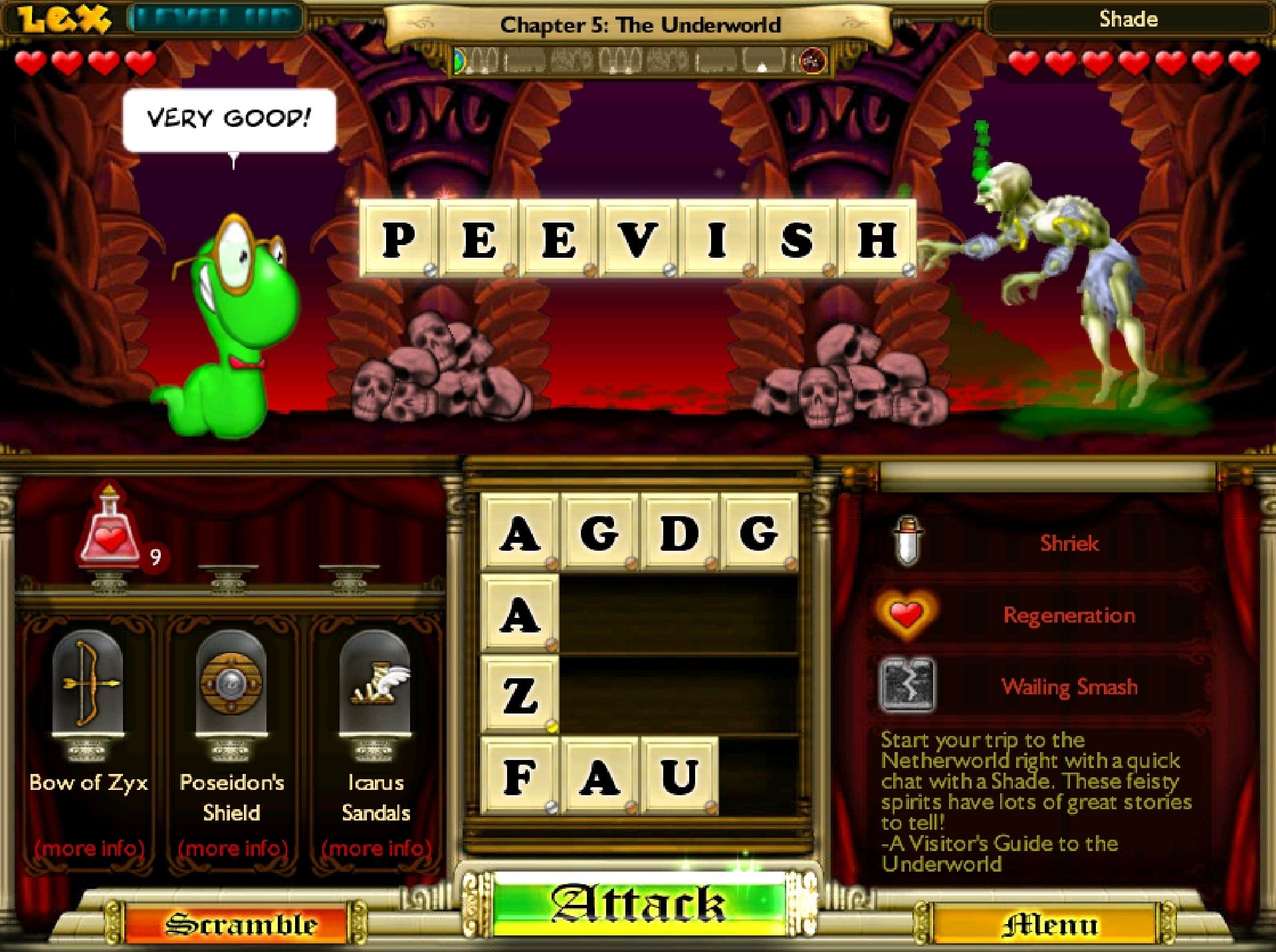Rules VS Play: the MDA framework

Game studies are often great, but hard to turn into practice. The MDA framework is one of the few exceptions, as it really helped me in my daily work.
First of all, let's see this brilliant explanation from Extra Credits, then I'll quickly summarize the paper itself and draw some conclusions about game localization. Let's go!
Games and players
What sets games apart from other media like books or movies is that their consumption is relatively unpredictable.
The game provides a set of rules, but it's player input that decides the exact events and outcomes.
The MDA framework
The MDA framework splits games consumption in three distinct components

Where:
- Mechanics: the elements of the game, at the level of data and algorithms
- Dynamics: the behavior of the mechanics in time and against player inputs
- Aesthetics: the desired emotional responses evoked in the player
Mechanics vs aesthetics
Designers tend to approach games from the mechanics point of view, thinking first at the single software rules (bullet trajectory), then the dynamics they create (shots from above travel further) and finally the aesthetic they deliver (snipers should place themselves on higher ground).
Players tend to go the other way around, thinking in terms of aesthetic first (I'm a sniper, I should go on the roof) and then confirming/denying their assumptions empirically (Yes, I must aim a bit higher, but I can kill enemies miles away from here!)

Core aesthetics
What are the core aesthetics, the main reasons we play a game for?
- Sensation: game as sense-pleasure (i.e. music games)
- Fantasy: game as make-believe (i.e. simulations)
- Narrative: game as drama (i.e. point and click adventures)
- Challenge: game as obstacle course (i.e. 2D platformers)
- Fellowship: game as social framework (i.e. cooperative multiplayer)
- Competition: game as dominance (i.e. 3D shooters)
- Discovery: game as uncharted territory (i.e. western RPG)
- Expression: game as self-discovery (i.e. games with creative elements)
- Abnegation: game as pastime (i.e. games involving grinding)
How M.D.A. affects translation?
Checking if a term sits at mechanic, dynamic or aesthetic level can give important indications for its translation.
- When dealing with mechanics, the main focus is precision.
If an arcane term like rebound appears in the options menu of a tennis game (i.e. rebound: 50 cm), you might want to resist the temptation to simplify it, as you might make it inaccurate and thus damage its main purpose.
- When dealing with dynamics, terminology should be reasonably precise, but also clear and consistent to be understandable without slowing down play (after all, dynamics are the base aesthetics sit directly on).
For example, if the rebound dynamic is mentioned in a tutorial (hit the ball after the rebound), you could reword it slightly if its name conflicts with another dynamic (for example bounce).
- When dealing with aesthetics, the main focus is characterization.
If rebound appears in a dialogue (That fella sure likes his rebounds), you might choose to replace it completely if it doesn't fit the setting.
Sometimes, the same term could be used for a mechanic, for the related dynamic and casually thrown around during aesthetics (especially common when programmers write the dialogues).
In that case, you might choose a separate translation for each context, or you could opt for consistency, choosing the term that best fits its main purpose and the core aesthetic of the game.

How core aesthetics are relevant for translation?
While thinking about mechanics, dynamics and aesthetics can guide us at sentence level, core aesthetics provide guidance at project level. Let's consider two examples.

The main aesthetics in Bookworm are challenge and abnegation.
- Feed Lex the Bookworm by spelling words - the longer the word, the more points you score.
- Spell the bonus word to score extra points. The more bonus words you spell, the bigger the points earned.
- Scrambles can be used to refresh the board if you can't make any more words - be careful though, each time you use a scramble burning tiles are added to the board, and you lose any special tiles you have collected. The more times you scramble, the more burning tiles will appear!
In this case, the aesthetic level is almost non-existent. Besides the (rather abstract) concept of feeding the bookworm by spelling words, all the messages we see refer to mechanics or (in the last case) complex dynamics.
Interestingly, nothing is ever said in character: messages are written directly to the player as the actual person using a videogame, without any fantasy avatar in between.
In other words, the aesthetic revolves entirely around mechanics and dynamics, building very little above them. That's what I would call an "inward" aesthetic.

The main aesthetic in Euro Truck simulator is fantasy, more specifically that of being a truck driver.
- Perfect cargo delivery means no damage to the cargo and no traffic violations.
- Obeying traffic rules will save you from paying hefty fines.
- Make sure you rest! After 12 hours driving, a truck driver must rest for 8 hours.
Naturally, the game has its own layer of mechanics and dynamics. Perfect cargo delivery might mean no car crashes over 51 Km/h on level 2 roads and not arriving more than 11 minutes after the set time, but this is never made explicit. Game messages are always in character with the aesthetic.
In other words, the aesthetic builds upon mechanics and dynamics but doesn't revolve around them. That's what I would call an "outward" aesthetic.
We can try to arrange core aesthetics from the most inward to the the most outward: Abnegation, Challenge, Competition, Sensation, Discovery, Fellowship, Narrative, Fantasy, Expression

At each step, the focus moves gradually from mechanics to aesthetics, and at each step the terminology becomes less rigidly defined and more prone to variations.
A competitive poker or chess game (abnegation, challenge, competition) will use a reduced number of very precise terms, a textual adventure (narrative, fantasy) might not have any.

Conclusions?
Over the past few years, the MDA framework and the core aesthetics have been a great tool for deciding the approach required for a project.
To come back to the initial Extra Credits video, to truly understand a game, we should go beyond its looks or controls and see what innate human needs and desires it wants to serve.
Only then we will really be able to provide the best possible translation for it, and for our audience.